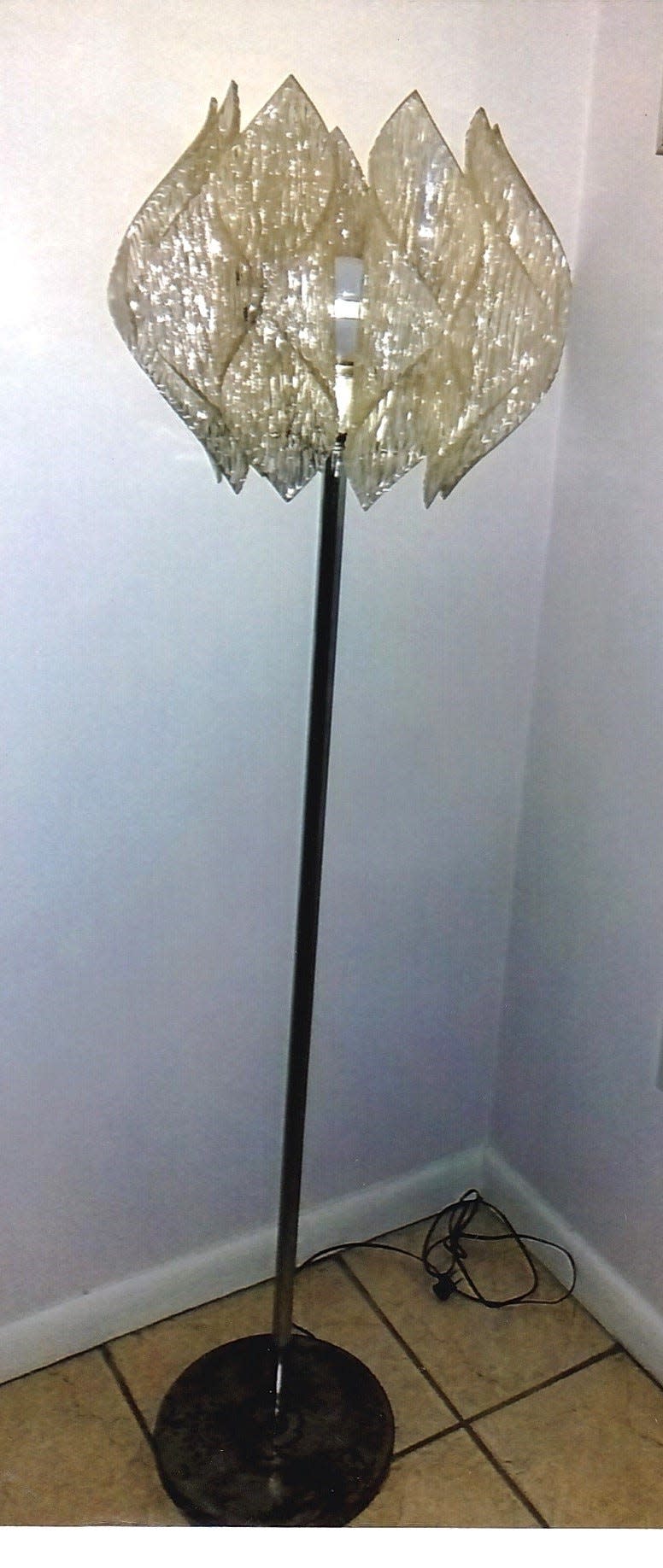Sikorski: Floor lamp likely made in the 1960s or ’70s

Q: We bought this lamp more than 40 years ago in a secondhand store. The owner said the lamp was in the store for about 30 to 35 years. She had no idea where it came from. The base and pole are chrome, and the shades are a form of plastic. The base covers a cast iron plate that is very heavy and was very rusty. No model numbers or names are on it at all. If the cast plate had any names or numbers, the rust covered them. Any clue to age or company? It is so ugly, it is beautiful. Thank you in advance. — V.P., Internet
A: I think the floor lamp was made after World War II, likely during the 1960s to ’70s. The fact that it has no manufacturer’s labels, etc., indicates it was made as a generic look alike, perhaps in the manner of an Italian designer. The shades almost have an angelfish shape to them. As you say, beauty is the eye of the beholder. Potential dollar value is catch as catch can.
Q: I have a pencil portrait of Thomas Edison by Fort Myers artist Buell Whitehead. It was given to my late husband by a friend of Whitehead's after he died. I am wondering if it has any value and if any museum would be interested. The work is signed. Thank you. — J.T., Internet
A: I wish you had included a photograph of your Edison portrait. Buell Whitehead, 1919 to 1993, was a Florida artist born in Fort Myers. I suspect your portrait of Edison is a lithographic print, not a pencil drawing. If it is a pencil drawing, the signature will be in the margin. If the signature is inside as part of the image, it is likely a lithograph. Potential dollar value, whether it is a print or a drawing, is very low. A donation is a good idea if you find interest in the piece. Try contacting the Amon Carter Museum of American Art in Fort Worth, Texas. They have a large collection of Whitehead’s works. The website is cartermuseum.org. Good luck, but expect disappointment.
Q: It was interesting reading your response about the valuation of mahjong sets. I would definitely be interested in purchasing/finding French Ivory mahjong sets in the $500 range. Thank you. — D., Internet
A: French ivory, which is not ivory, is a synthetic, man-made product intended to deceive the buyer. Synthetic ivories go by several different trade names — e.g., Pyralin, Ivoride, French Ivory, Genuine French Ivory, Ivorite, etc. — and have been produced since the 1860s. I found with little effort multiple synthetic ivory mahjong sets on auction sites like eBay, Etsy, etc., for less than $500. Enjoy the hunt.
Q: My friend suggested I contact you about a number of items I have inherited from several family members over the years. I am the end of the line and have no one to pass them onto. Any help you can provide would be helpful. — G.R., Internet
A: I would be glad to help you. I offer private verbal appraisals in home. It is what I call a verbal walk through discussing what has collector value and what does not. Also included is advice about what to do with those items you want to sell. Call me at 352-351-1009 and we will discuss the details.
— John Sikorski, with more than 35 years of experience, is an Ocala-based antiques advisor, consultant and broker. Send your questions to Sikorski's Attic, c/o The Ocala Star-Banner, 2121 SW 19th Ave. Road, Ocala, FL 34471-7752, or email absantique@aol.com.
This article originally appeared on The Gainesville Sun: Sikorski: Floor lamp likely made in the 1960s or ’70s

